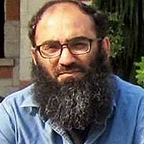Ontological Democracy and Life Cycle of Software Objects
From the autonomous agents to embodied dexterous AI, are we seeing early appearances of Ted Chiang’s digients?
Subterranean Press
With recent breakthroughs in embodied AI made possible by multimodal generative models, this is the right time to revisit a modern classic, that might turn out to be one of the most prophetic works of speculative fiction.
Ted Chiang’s Life Cycle of Software Objects challenges the conventional notions of sentience like no other work. Innumerable other classics in the genre, for instance, Isaac Asimov’s Bicentennial Man, Alex Garland’s Ex Machina, or Spike Jonze’s Her, do raise interesting questions about one or two dimensions of intricate relationships between humans and machines, but none come close to asking the ultimate question, i.e., what it ultimately means to be human in the age of artificial intelligence?
More specifically, does consciousness necessarily require a biological substrate, or does any advanced form of artificial intelligence actually remain artificial?
Chiang’s story revolves around the evolution of digital entities known as digients, and the related ethical dilemmas invite an examination of our relationships with technology. This modern classic novella, which came out in 2010, remains a profound philosophical meditation on the essence of being.
The narrative records the journey of Ana Alvarado and Derek Brooks, two friends, and once co-workers in the care and education of digients — digital entities capable of learning, feeling, and evolving. The premise opens unlimited ethical and existential reflections, including pet ownership, parenthood, self-determination, and the mysterious nature of consciousness.
Digients (pretty much like us) seemed innocent and complex; still, their innocence and complexity have an artificiality attached to them as their owners know they are artificially intelligent beings. Thus this story serves as a triadic canvas to raise ethical, existential, and ontological questions.
Not sure if Ted Chiang’s story is ever read in a formal philosophical paradigm, however, it is important to note that all these questions resonate well with the principles of object-oriented ontology (OOO), a proposition that all entities, regardless of their nature, possess a being and agency. In this light, the digients transcend from mere digital constructs to entities with the right to exist and influence with a seemingly active psyche.
Similarly, any form of embodied AI, no matter how primitive, will certainly be a part of the ontological tapestry of the universe. The question arises: is modern civilization subsequently moving towards an early form of ontological democracy?
We can imagine an ontological democracy as a semi-posthuman sociopolitical worldview where beings are valued not for their utility to humans but for their existence, per se. This would force upon us a radical rethinking of our relationship with the so-called inanimate world. Just like we prompt AI objects, we’ll be prompted back subconsciously to ponder the rights of these artificial entities. This back-and-forth prompting would ultimately challenge the traditional hierarchies or organic and human privilege over things non-human and inorganic.
Subsequently, an intricate relationship web would emerge, just like Ted Chiang’s imaginary world, where humans and digients come together in an actor-network realm. We see that digients are portrayed not as passive objects to be prompted for a pseudo-organic response but as capable agents, continuously evolving and shaping their interactions with humans.
This ultimately challenges the notion of human exceptionalism, highlighting the interconnectedness of technology and society. Our futures are undoubtedly intertwined with the digital entities we create and interact with.
This brings us to Marting Heidegger, whose reflections on technology may provide a systematic backdrop to examine Chiang’s exploration. It is well known that for Heidegger, technology is not merely instrumental but a means through which the essence of being in time is unveiled.
Chiang’s digients, thus serve as a technological mirror reflecting our deepest fears, desires, and dilemmas. An interesting theme of technological obsolescence resonates throughout the novella. As their underlying technology ultimately becomes outdated, the question of disposableness refuses to fade out. Thus it can also be read as a cautionary tale provoking us to reevaluate our relationship with the inanimate objects of the world.
Chiang offers a vision of a world that timely provokes us to evaluate the nature of (non)humanness concerning and within ourselves. Don’t we already have an inanimate outward extension? Isn’t our supposed human agency already morphed into the agency of allegedly non-living objects with visible agency at work? And if this is so, how is it different than ancient man’s relationship to its immediate world of trees and rivers?
As we get ready to prompt speech-to-speech automatons in a world increasingly occupied with advanced forms of neopets and tamogatchis, my mind keeps going back to Chiang’s digients which he masterfully evolves from lab animals to pets to digital agents with little children-like innocence. In an overwhelmingly capitalist society, they are forced to market themselves to preserve their individuality and save the last bit of their relationship with human companions.
Only time will tell whether a world infused with embodied and generative autonomous agents would be more of a utopia or dystopia, however, it will hardly be something which good speculative fiction had not already imagined.
